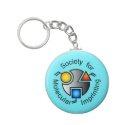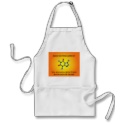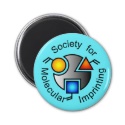|
|
Reference type: Journal
Authors: Baba Y, Oshima T, Kanemaru S
Article Title: A Quantitative Consideration for Template Effect of Palladium(II) Using N-[Pyridylmethyl] Chitosan.
Publication date: 2011
Journal: Solvent Extraction and Ion Exchange
Volume: 29
Issue: (3)
Page numbers: 509-517.
DOI: 10.1080/07366299.2011.573452
Abstract: Crosslinked N-[pyridylmethyl]chitosan (PMC) incorporating pyridine moiety and the crosslinked palladium(II)-imprinted-N-[pyridylmethyl]chitosan (PIPMC) were synthesized to elucidate the template effect of palladium(II) in the adsorption of metals from hydrochloric acid. The adsorption selectivity for metal ions from hydrochloric acids on PIPMC was compared with that on PMC. PIPMC exhibited the high selectivity towards not only palladium(II), but also gold(III), nickel(II), and copper(II) that tend to form planar complexes, while other metal ions such as cadmium(II), zinc(II), and cobalt(II) that form octahedral complexes were almost not affected as well as those on PMC. This suggests that PIPMC selectively recognized the metal ions that form the same planar type of complexes as palladium(II) of a template. Furthermore, in order to elucidate the template effect of palladium(II), the adsorbed species of palladium(II) on PMC and PIPMC were determined by examining quantitatively the effect of the reactive species on the adsorption of palladium(II) from hydrochloric acid
Template and target information: palladium ion, Pd(II), gold ion, Au(III), nickel ion, Ni(II), copper ion, Cu(II)
Author keywords: chitosan, N-[pyridylmethyl], template effect, palladium, molecular imprinting, planar complex, selectivity, adsorption
|


 SMI keychain blue
SMI keychain blue







 Good morning caffeine apron
Good morning caffeine apron







 SMI magnet blue
SMI magnet blue






